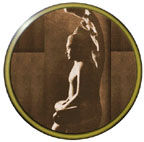

A state of deep relaxation can be induced through the practice of meditation, yoga, Tai Chi or other related disciplines. Relaxation quiets the mind and body. In this state, the brain produces slower brain waves, fewer breaths per minute are taken and the body uses up to 20% less oxygen. In addition, the heart rate can decrease up to three less beats per minute. It matters little whether one engages in a physically-active or physically-passive exercise; both help reduce stress and anxiety.
![]() Return
to the menu page »
NIH Mind/Body
Return
to the menu page »
NIH Mind/Body
An ancient practice found in many cultures and religions, meditation can be broadly defined as any activity that keeps the attention pleasantly anchored in the present moment. In the West, the practice is most closely associated with stress management, but it has proven itself effective in reducing high blood pressure, anxiety and pain, and increasing concentration, intelligence and creativity. Transcendental Meditation™ is a popular form of meditation in the West because it does not require a drastic change in lifestyle.
Meditation takes many forms, but there are four elements common to most systems: a quiet environment; a formal, comfortable body position; something to focus on, like an object, a word, or your breathing; and a passive, receptive attitude. It only requires ten to thirty minutes, and is most effective when done everyday and at the same time each day. Meditation methods can be divided into two basic types: Concentrative, which emphasizes focusing on an object; and Mindfulness, which is the attempt to "empty the mind" in order to make it more accessible to new perceptions.
Benefits derived from meditation can be broken down into two areas, physiological and psychological. It has proven effective in helping patients control drug addiction and chronic illness. It has been used in pain management and to help control the immune system. Its most popular use is for stress control, which, among other things, aids in lowering blood pressure. Psychological benefits include lowering anxiety levels, relief from psychological trauma, and gaining personal insight and spirituality.
Tai Chi is a Chinese martial art that is primarily practiced for its health benefits. Although the martial arts are perhaps best known as a means of self-defense, they are also used to improve physical fitness and promote mental and spiritual well-being. The highly disciplined movements and forms help to unite the body and mind, and thereby bring balance to the individual's life. "External" martial arts (such as karate and kung fu) focus on endurance and brute muscular strength, while "internal" methods (such as Tai Chi and Aikido) focus on control and relaxation. Essentially a form of meditation, or what has been called "meditation in motion," Tai Chi emphasizes complete relaxation. Is is characterized by soft, slow, flowing, precisely executed movements that emphasize force, rather than brute strength.
Yoga comes from the Sanskrit work "yuj," meaning "to yoke," or to join or balance the mind, body and breath of an individual. This is achieved through the practice and mastering of three interrelated activities. First are specific physical postures, called "asanas," that relax and tone the muscles and massage the inner muscles. Second are "pranayama," or breathing exercises, that slow breathing and increase the body's stores of "prana," or vital energy. Meditation aims to calm the mind and emotions.
Yoga's stretching, strengthening and meditative exercises re effective because they encourage complete focusing on movement and the body parts involved. Yoga trains the mind and body to work together to create a healing environment.
Yoga aims to treat illness by improving health on all levels simultaneously and by restoring inner harmony. The two most popular forms of Yoga are Raja Yoga (mental exercise) and Hatha Yoga (physical exercise). Although there are many styles of Yoga, all employ the same basic postures (asanas) and breathing exercises.